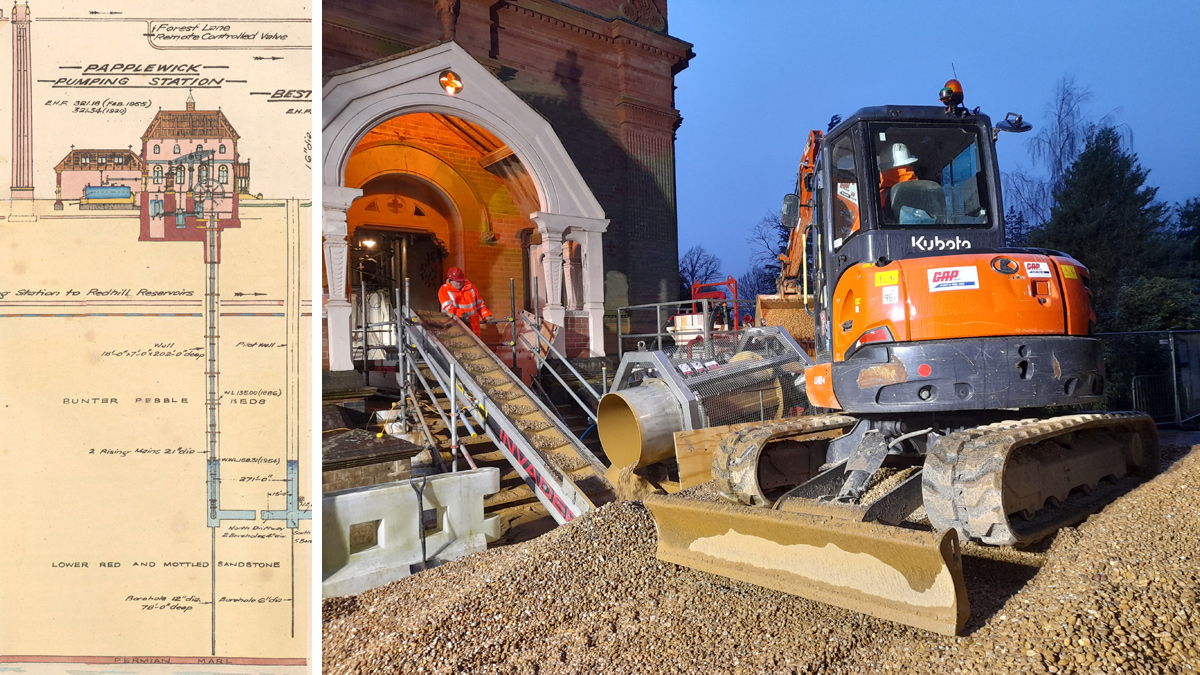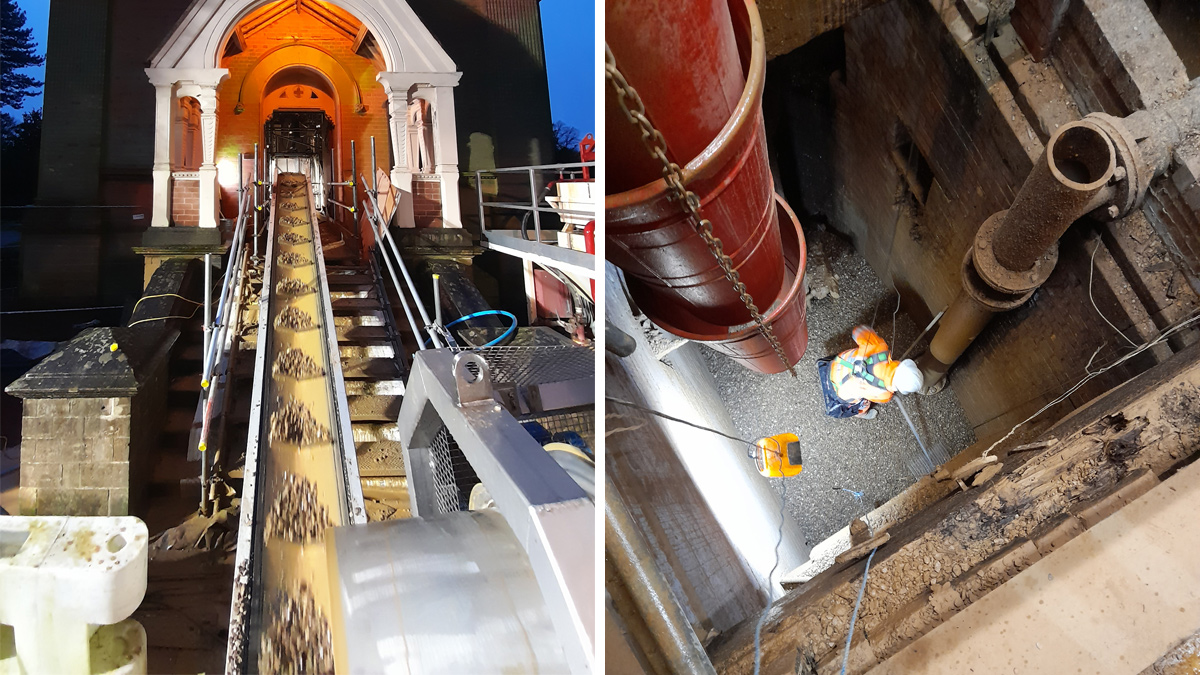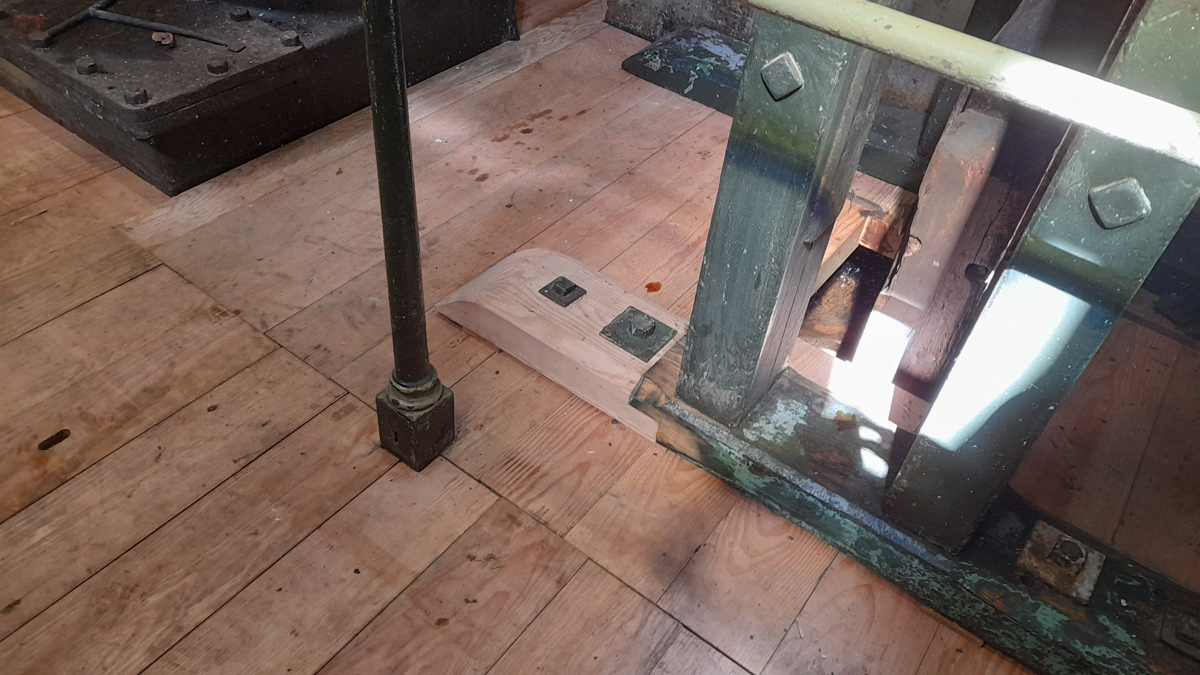Papplewick Borehole Pumping Station (2022)

Papplewick Borehole Pumping Station - Courtesy of Galliford Try
Papplewick Borehole Pumping Station is one of a series of pumping stations constructed during the Victorian period by Thomas Hawksley to provide clean and reliable drinking water to the city of Nottingham. When brought into operation in 1884, the steam pumping station extracted groundwater via two deep wells with an ornate housing constructed over Well 1 but also abstracting from Well 2 via an adit. The beam engine itself was decommissioned in 1969 and replaced with four submersible electric pumps but restoration work during the 1970s allowed the steam engines to be run once again; including beam engine movement. To this day it is the only preserved pumping station still fully working within the Midlands. Water is still abstracted from Well 2 and treated on site before being pumped into the wider Severn Trent public water network but ultimately continuing to provide Nottingham with water.
Scope
Although historic attempts have been made to seal off Well 1 from Well 2, Severn Trent made a decision in 2019 that a more robust and reliable seal should be installed to mitigate the risk of any possible contamination of Well 2, which is still a source for public consumption. Anecdotal evidence indicates that the timbers capping Well 1 started to fail approximately 20 years ago and a risk of both hydrocarbons from beam engine oils and bacteria from debris pose a contamination risk if the existing seal was inadequate.
The works therefore involved making the seal between Well 1 and Well 2 via the adit impermeable and reducing the risk of debris and oils from entering Well 1 entirely whilst still allowing the working beam engine to function.

(left) Original drawing showing link between on-site wells and (right) gravel installation using a trommel – Courtesy of Galliford Try
Key aspects
- Survey the existing seals on Well 1 via a ROV from Well 2.
- Grout the base of Well 1’s shaft to above the adit level.
- Install gravel to fill the Well 1 shaft.
- Install a suspended sealing slab within Well 1’s shaft.
- Install a pumping system that allowed condensed water from steaming activities to be pumped back into the cooling pond.
- Replace the damaged timber floor covering Well 1.
Challenges
Papplewick Pumping Station represents a rare example of a group of buildings which are both Listed and Scheduled, as well as being located within a Grade II Registered Park and Garden. Because the site boilers are operational, steam is still used to operate the main cylinders/pump jack. These events, known as ‘Steam Events’ are open to the public and other private events such as weddings are held all year round. Because of this, the works had to be phased around all booked and pre-planned events, with the condition of the site left as the public would expect to see.
The volume of gravel required to be installed into the shaft with minimal space and access opportunities were addressed by using a bespoke trommel and conveyor system. This not only allowed a large volume of gravel to be installed, but also for it to be disinfected by sodium hypochlorite to mitigate the risk of introducing additional bacteria picked up in the mining process of the gravel itself. Work was conducted around the clock to stay on programme constraints.

(left) Conveyor system into historic pump house and (right) levelling of gravel within shaft – Courtesy of Galliford Try
As Well 2 was still operational, the risk of elevated turbidity and general water quality was a concern due to the volume of grout needed to be used in the sealing of the shaft that could migrate via fissures within the surrounding aquifer. A short interruption in pumping of Well 2 was planned and increased sampling and water quality monitoring introduced before Well 2 was diverted back into the public water network.
Working above a 60m deep shaft meant that access to the working area was strictly controlled whilst allowing volunteers access to grounds to support maintenance activities required to keep the site running. As well as the risk of falling from height the confined space nature of the shaft meant certain techniques where not permitted due to the risk of fire and restricted access for removing personal. Work was conducted from the ground level for all activities until the suspended slab required to be installed several meters below ground level.
The original floor design covering Well 1 had been lost for many years and therefore each piece of flooring panel had to be cut and installed on site using raw materials after establishing how the original flooring had been designed.

Restoration of piston rod guide wooden structure – Courtesy of Galliford Try
Papplewick Borehole Well Capping: Supply chain – key participants
- Main contractor: Galliford Try
- Backfill contractor: Marriott Drilling Group
- Historic floor reinstatement: CBS Ltd
Successful outcomes
The work did not impact any events on site and was conducted with zero accidents or lost time injuries. The planned return of water to the network led to no additional water quality concerns being raised and was successfully recommissioned. The new timber floor allowed greater access to the volunteers of the Papplewick Pumping Station Trust to maintain and inspect parts of the beam and were previously inaccessible.



